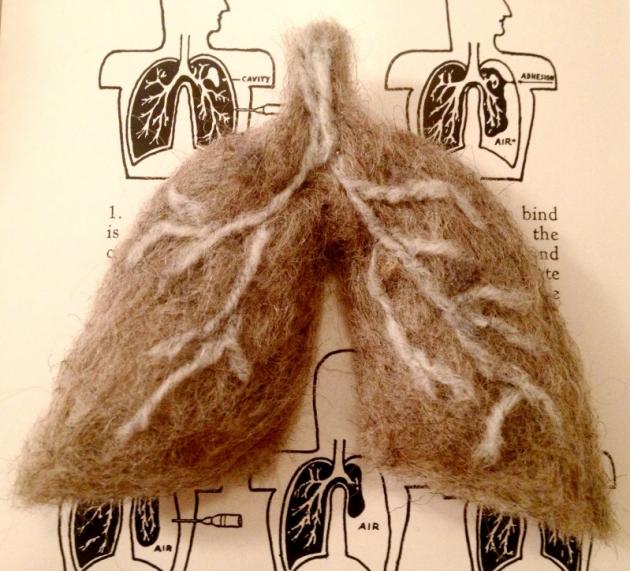The Romantic Disease: An Artistic Investigation of Tuberculosis is a ground-breaking solo exhibition by artist Anna Dumitriu, of installations and sculptures made with strains of mycobacteria, transformed historical artefacts, and textiles that expose the complex history of Tuberculosis (TB) and our responses to the disease.
Anna Dumitriu is fast becoming Britain’s most celebrated bio-artist. She is best known for creating textile art with and about bacteria, in particular stitching textiles with superbugs such as her “MRSA Quilt”. For The Romantic Disease: An Artistic Investigation of Tuberculosis, she has worked at the cutting edge of research alongside Oxford University and Public Health England scientists from the UK Clinical Research Consortium: Modernising Medical Microbiology Project.
The Romantic Disease: An Artistic Investigation of Tuberculosis e xplores the history of TB from artistic, social and scientific perspectives and covers subjects such as superstitions about the disease, its literary and romantic associations, the development of antibiotics and the latest research into whole genome sequencing of bacteria. It has been made in collaboration with a number of leading organisations including the charity Target TB and Brighton and Sussex Medical School, who discussed ideas and gave advice about the project.
The works are made with a combination of textile art and biological matter including strains of Mycobacterium vaccae, M. bovis and M. tuberculosis that have been sterilized prior to exhibition. Re-crafted historical artefacts and objects are added to the mix. For example, Dumitriu has developed a series of textile installations stained with bacteria dyes patterned using antibiotic ‘resists’, which focus on how early ‘antibiotics’, such as Prontosil, were derived from ch emical dyes. For ”Where there’s dust there’s danger” she has created a series of tiny felt lungs from wool and dust onto which she has incorporated the DNA of killed Mycobacterium tuberculosis in a Containment Level 3 Laboratory (the highest level for handling bacteria). Around a century ago dust was incorrectly thought to be one of the primary causes of the disease. Amongst the altered historical artefacts an intricately carved and engraved Pneumothorax Machine can be found, previously used to collapse lungs of unfortunate patients ‘to give them a rest’.
As well as the exhibition, The Romantic Disease has an ‘open lab’ workshop with Anna Dumitriu, Dr Simon Park and Dr Melissa Grant. This will run on five Saturdays, 11am – 5pm, on 15th and 22nd February, 1st, 15th and 22nd March 2014 and visitors on those days will see the group at work in the gallery.
Anna Dumitriu works in the field of art -science and has a strong interest in the ethical issues raised by emerging technologies. Her installations, interventions and performances use a range of digital, biological and traditional media including live bacteria, robotics, interactive media, and textiles. Her work has a strong international exhibition profile and is held in several major public collections, including the Science Museum in London. Dumitriu is known for her work as founder and director of The Institute of Unnecessary Research, a group of artists and scientists whose work crosses disciplinary boundaries and critiques contemporary research practice. She recently completed a Wellcome Trust commission entitled The Hypersymbiont Salon, is collaborating as a Visiting Research Fellow: Arti st in Residence with the Adaptive Systems Research Group at The University of Hertfordshire (focussing on social robotics) and (Leverhulme Trust 2011) Artist in Residence on the UK Clinical Research Consortium Project Modernising Medical Microbiology at The University of Oxford. Her major international project Trust me I’m an Artist, Towards an Ethics of Art-Science Collaboration, in partnership with the Waag Society in Amsterdam and The University of Leiden, investigates the novel ethical problems that arise when artists create artwork in laboratory settings. She was winner of the 2012 Society for Applied Microbiology Communication Award.
15th January -24th March 2014, Watermans Art Centre

